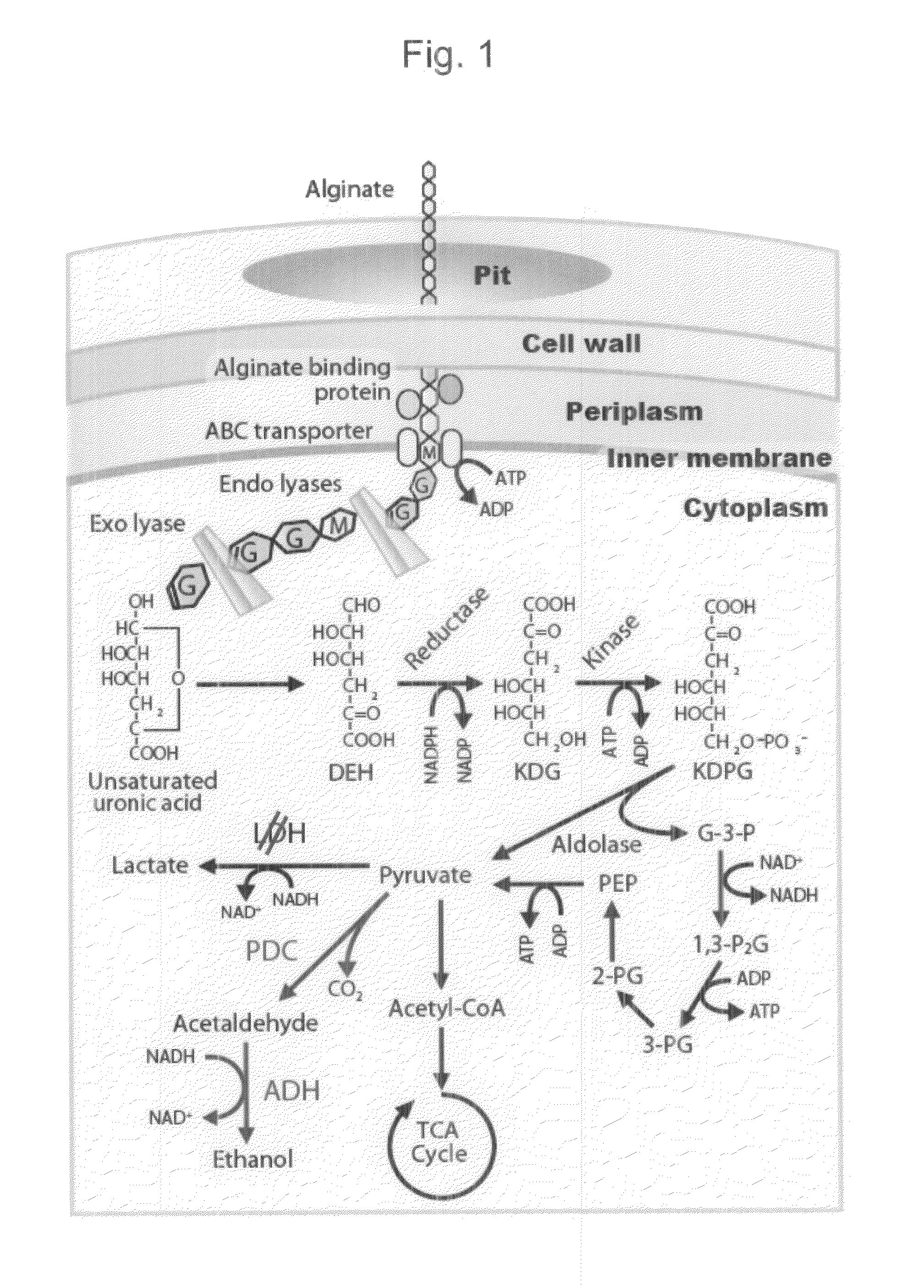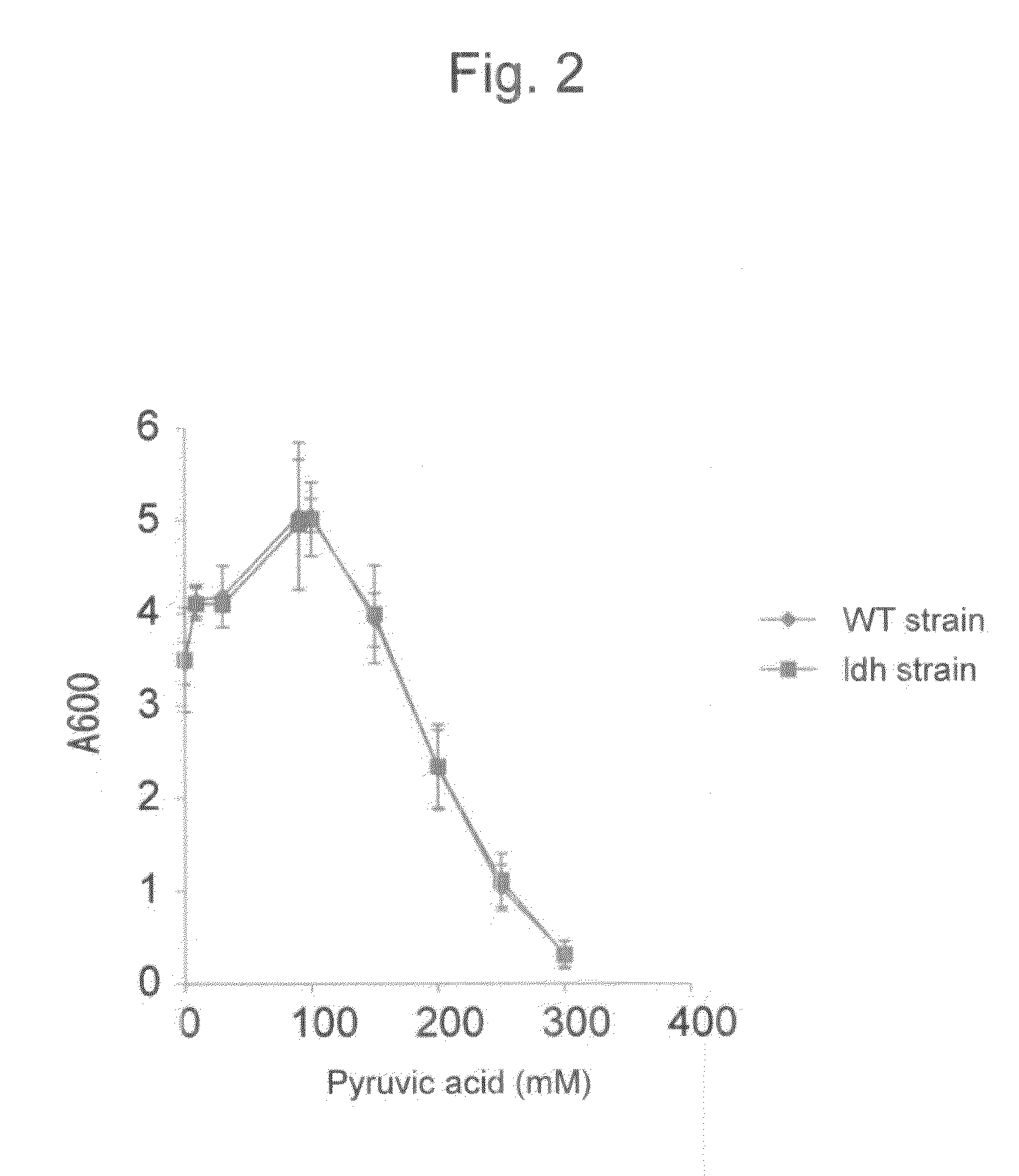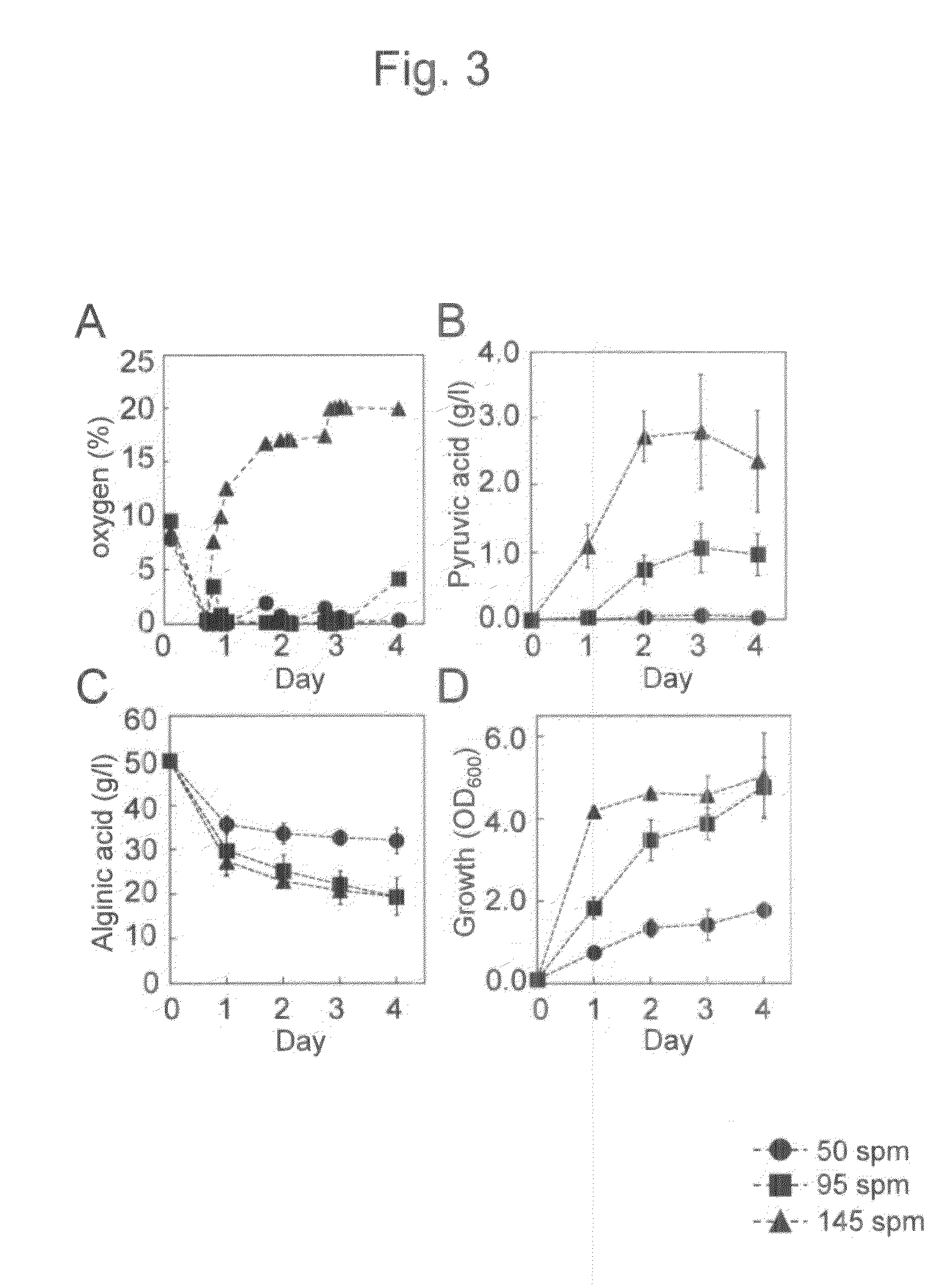Method for producing pyruvic acid from alginic acid
a technology of alginic acid and pyruvic acid, which is applied in the direction of fermentation, etc., can solve the problems that the method of producing pyruvic acid from alginic acid by a fermentation method has never been disclosed, and achieves the effect of large environmental burden and large input of energy consumption
- Summary
- Abstract
- Description
- Claims
- Application Information
AI Technical Summary
Benefits of technology
Problems solved by technology
Method used
Image
Examples
example 1
Production of Pyruvic Acid by Lactate-Dehydrogenase-Deficient Sphingomonas Sp. A1 Strain (LDH Strain)
Method
[0074]A wild-type Sphingomonas sp. A1 strain (WT strain), a lactate-dehydrogenase-gene-deficient Sphingomonas sp. A1 strain (ldh strain), an ethanol-producing Sphingomonas sp. A1 ldh strain (MK3353 strain: prepared by introducing an alcohol dehydrogenase (ADH) gene and a pyruvate decarboxylase (PDC) gene into the ldh strain via pKS13), a control Sphingomonas sp. A1 ldh strain (MK3567 strain: prepared by introducing pKS13 into the ldh strain) were used. In the following examples, in cases in which the MK3353 strain and the MK3567 strain were used, these strains are specified by their strain names (MK3353 strain and MK3567 strain) in order to distinguish between them and strains having no plasmid (i.e., the WT strain and the ldh strain). As a medium, the alginic acid medium described below was used.
[0075]The composition of the alginic acid medium is as follows: 0.1 (w / v) % (NH4)2...
example 2
Initial Alginic Acid Concentration and Pyruvic Acid Production (2-10 (w / v) % Alginic Acid)
[0086]With an initial alginic acid concentration of 2-10 (w / v) %, the lactate-dehydrogenase-deficient Sphingomonas sp. A1 strain (ldh strain) was cultured for 6 days by a method similar to that described in example 1.
[0087]FIG. 7-1 shows the growth of the lactate-dehydrogenase-deficient Sphingomonas sp. A1 strain (ldh strain) when the initial alginic acid concentration ranged from 5% to 10%. FIG. 7-2 shows the amount of pyruvic acid produced when the initial alginic acid concentration ranged from 2% to 10%. As shown in FIG. 7-1, the growth of the strain reached a maximum when the initial alginic acid concentration was 5%. However, once the concentration exceeded 5%, the growth rate decreased as the initial alginic acid concentration increased. Also, as shown in FIG. 7-2, the amount of pyruvic acid produced reached a maximum when the initial alginic acid concentration was 5%, and decreased regar...
example 3
Effects of pH on Pyruvic Acid Production by Lactate-Dehydrogenase-Deficient Sphingomonas Sp. A1 Strain (A1ΔLDH) (MK2651 Strain)
Method
Strain and Medium
[0088]In this example, the lactate-dehydrogenase-gene-deficient ldh strain (designated as MK2651 strain) prepared from the A1 bacterial strain of the genus Sphingomonas used in examples 1 and 2 was used. Alginic acid medium was used to culture the strain. The composition of the alginic acid medium (pH7.9) was composed of 0.5, 0.8 or 5% (w / v) sodium alginate [derived from Eisenia bicyclis, average molecular weight of 110 kDa, (Nacalai Tesque, Kyoto, Japan)], 0.1% (w / v) (NH4)2SO4, 0.1% (w / v) KH2PO4, 0.1% (w / v) Na2HPO4, 0.01% (w / v) MgSO4.7H2O, and 0.01% (w / v) yeast extract (Nacalai Tesque). In addition, hereinafter, alginic acid media containing 0.5, 0.8, and 5.0% (w / v) sodium alginate are denoted as 0.5, 0.8, and 5.0% alginic acid media, respectively. In the case of solid medium, agar (Nacalai Tesque) was added to 1.5% (w / v). Each algini...
PUM
| Property | Measurement | Unit |
|---|---|---|
| pH | aaaaa | aaaaa |
| concentration | aaaaa | aaaaa |
| concentration | aaaaa | aaaaa |
Abstract
Description
Claims
Application Information
 Login to View More
Login to View More - R&D
- Intellectual Property
- Life Sciences
- Materials
- Tech Scout
- Unparalleled Data Quality
- Higher Quality Content
- 60% Fewer Hallucinations
Browse by: Latest US Patents, China's latest patents, Technical Efficacy Thesaurus, Application Domain, Technology Topic, Popular Technical Reports.
© 2025 PatSnap. All rights reserved.Legal|Privacy policy|Modern Slavery Act Transparency Statement|Sitemap|About US| Contact US: help@patsnap.com



